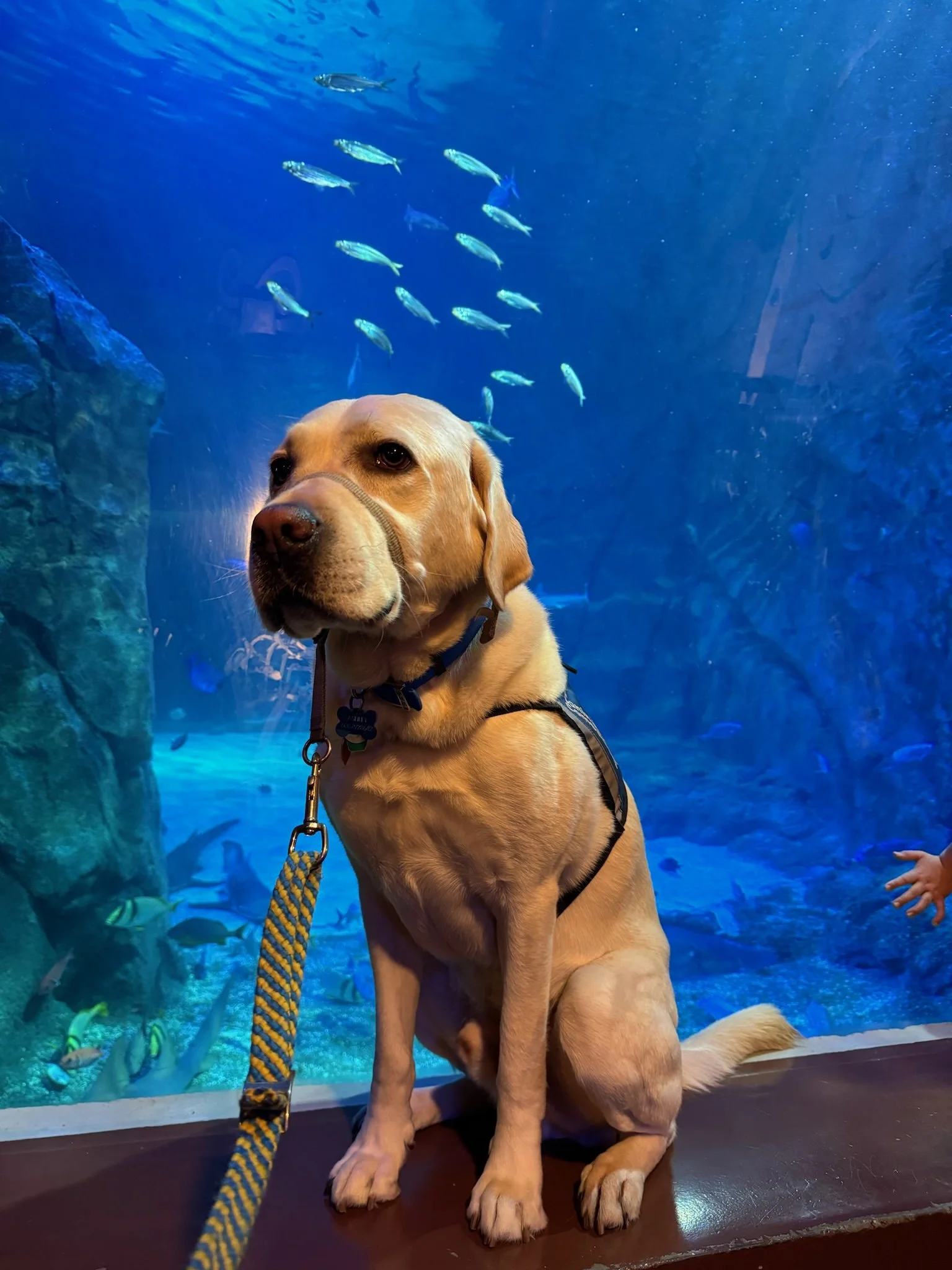The Service Dog Journey
Nikita and I on Match day
Kade on a visit to the St. Louis aquarium
My Journey to Getting a Service Dog Through Canine Companions
Life has been a whirlwind lately—two jobs, endless deadlines, and barely enough time to breathe, let alone prewrite blog posts. I’ve been trying to stay consistent, but sometimes life just doesn’t make it easy. One of my readers recently asked me to share my experience with Canine Companions, since they’re currently on the waiting list for a dog of their own. So, here it is: my story.
Those of you who’ve known me for a while know that I started researching service dog organizations shortly before turning 18. I knew that if I was going to live independently, I’d need extra support for those moments when I was alone without another human.
After months—honestly, closer to a year—of research, I realized Canine Companions was the best fit for me. Here’s why:
No Treat-Based Rewards After Basic Training
Once a puppy completes basic commands like sit and stay, they’re weaned off treats as a reward. This was huge for me because I have dexterity challenges, and fumbling with treat pouches would have been frustrating. Instead, praise becomes the primary reward.No Fees for Graduates
Canine Companions provides dogs at no cost to graduates. The only expenses are food, vet care, and supplies once the dog comes home. Many organizations in Wisconsin charge fees and require treat-based training, which didn’t work for me.Training Philosophy
Dogs have short attention spans—about 10–15 seconds after a command—so treat-based systems can make it harder for them to connect the reward with the behavior if there’s any delay. Canine Companions’ approach avoids that issue.
I applied shortly before turning 18. By 19, I was headed to the Ohio facility for a face-to-face interview. This included testing my ability to give corrections—both verbal and wheelchair-based (like turning into the dog to interrupt unwanted behavior). That interview made me even more excited.
But here’s the reality: I wasn’t paired with my first dog until three years later, at age 22. By then, I was a junior in college living a fast-paced life. Taking two weeks off for training meant listening to audio lectures and cramming schoolwork after long days of dog training.
Training was intense but rewarding. For the first few days, I worked with 3–4 different dogs. Then came what I affectionately call Match Day—the moment you’re paired with your dog. Initially, it’s called a “temporary placement,” but unless there’s a safety issue (like being pulled out of a wheelchair or walking into traffic), that match becomes permanent.
After that, the rest of training focuses on commands in public and classroom settings. One challenge? Dogs aren’t trained with electric wheelchairs beforehand, so they need to learn how to navigate around yours. Yes, I’ve accidentally run over paws—it breaks my heart—but it’s part of the learning curve.
Most of you know I’m now on my second service dog. Both have been perfect for the stage of life I was in. Building that bond takes patience and grace—for both you and the dog. Every dog has a unique personality, just like us.
Nikita, my first dog, was calm and adaptable. She even spent the night in the college library with me during finals week when a snowstorm stranded us.
Kade, my current dog, is more protective. He’ll sit full weight on my stomach and watch the door like he’s guarding me for life. But he probably wouldn’t have handled that library sleepover as well as Nikita did.
When Nikita passed, I applied for a successor dog. They tell you it can take up to two years to get matched again. I was lucky—it only took four months. But I wasn’t prepared for the grief of bringing home a new dog so soon. Molly Burke said it best: “It’s like jumping into bed with a perfect stranger immediately after a breakup.” Getting matched with Nikita was the best hello I’ve ever had—and the hardest goodbye.
Choosing to get a service dog is a big decision. They’re a lot of work, but for those of us with disabilities that impact independence, they’re life-changing tools. I’m endlessly grateful to the volunteers who raise these puppies for 18 months, then return them for advanced training, and to the trainers who prepare them for graduates like me. There’s no way to fully express the gratitude I feel.
To anyone on the waiting list: The process can be long and sometimes frustrating, but it’s worth every second. The bond you’ll build is unlike anything else.

